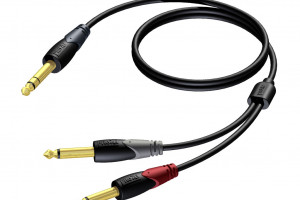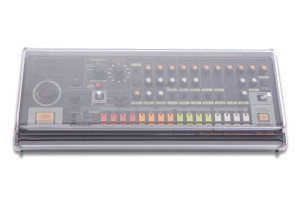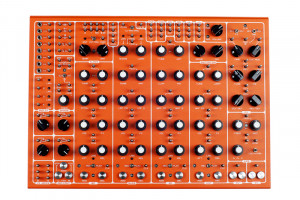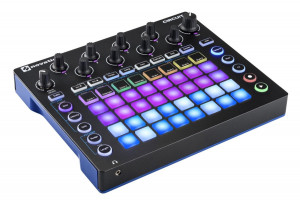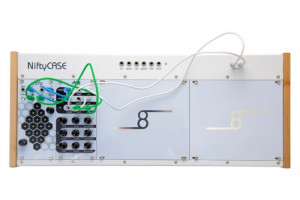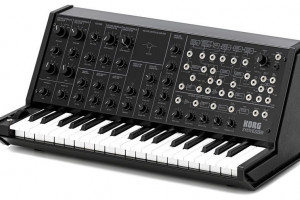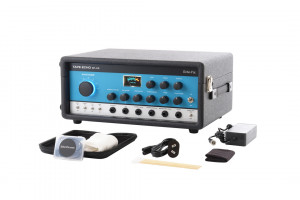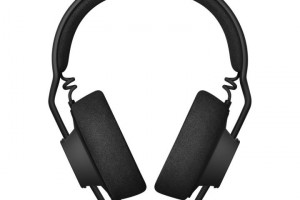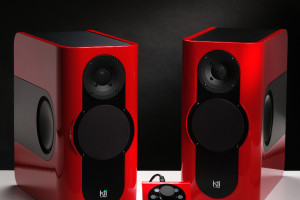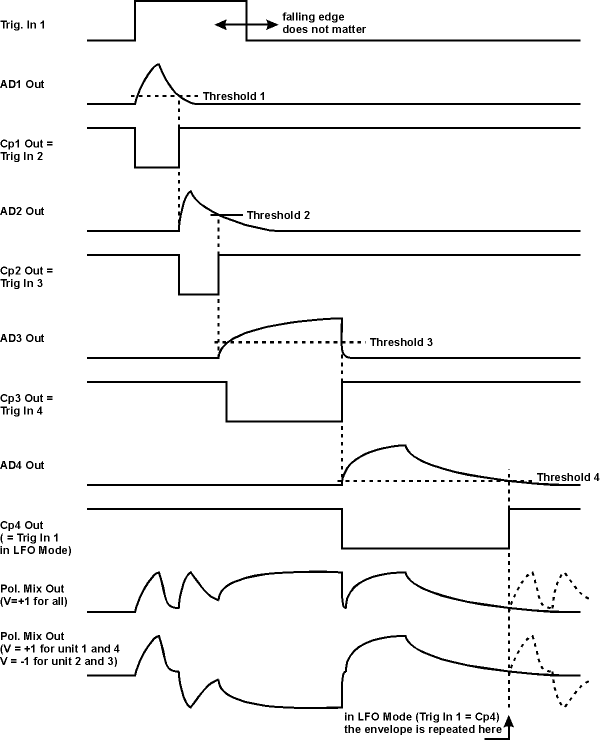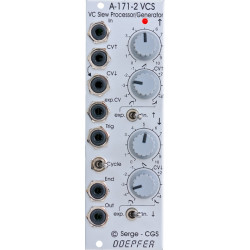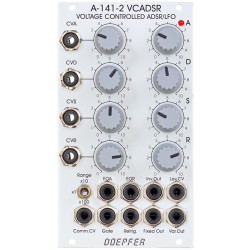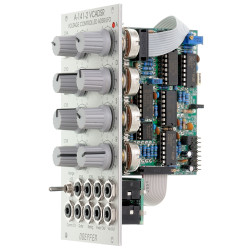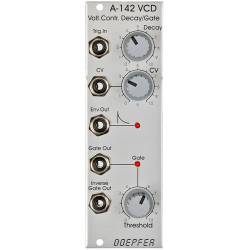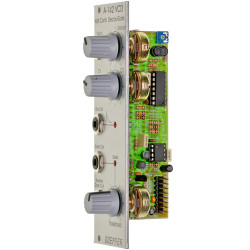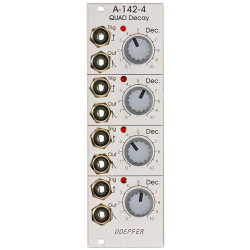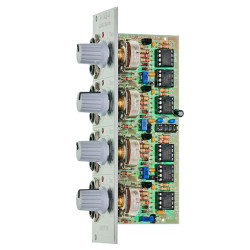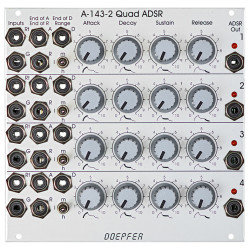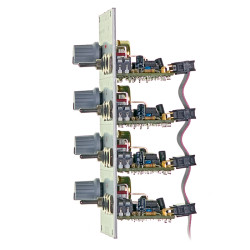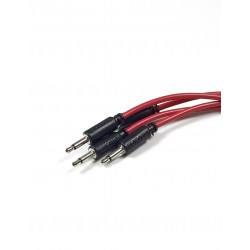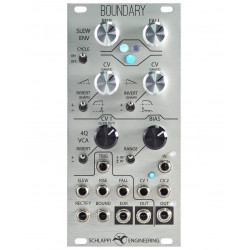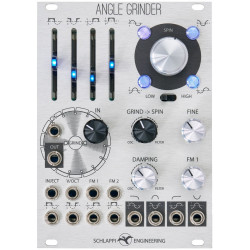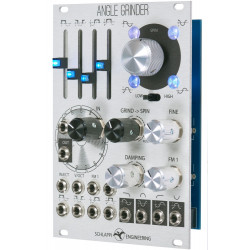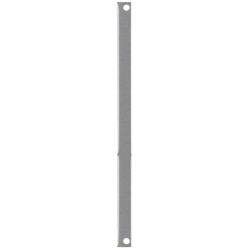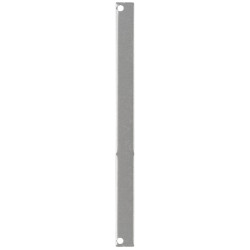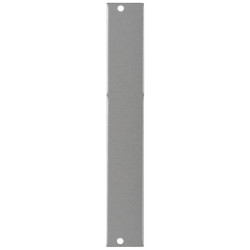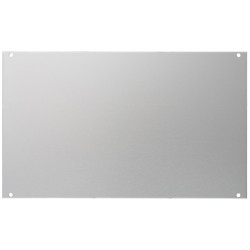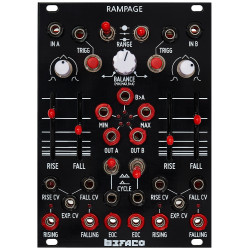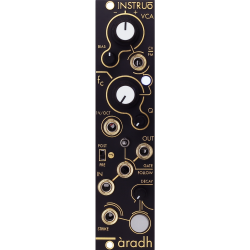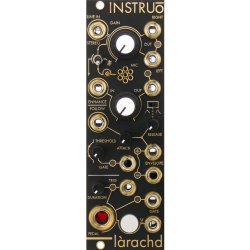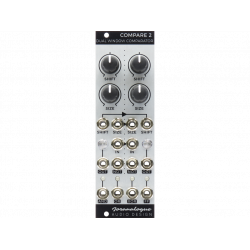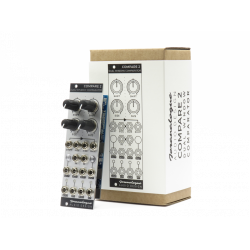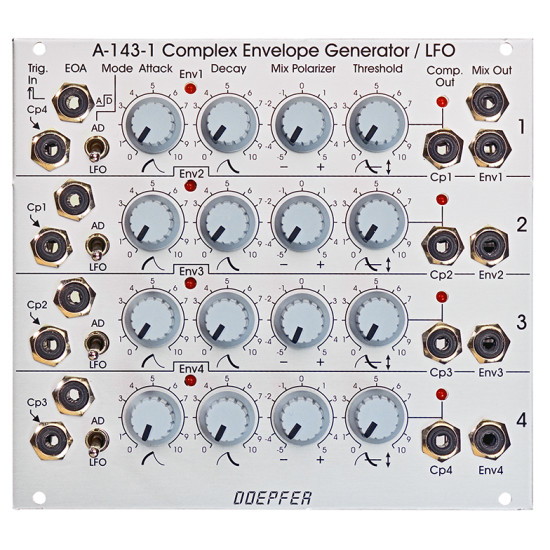
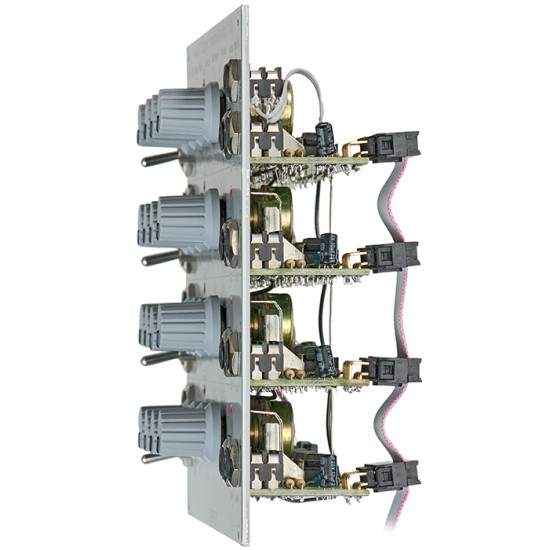


- Stock: In Stock
- Model: DOEPFER-A-143-1
More from this brand
Overview: Module A-143-1 is a complex envelope generator that consists of Attack/Decay generators. For the complex envelope generator the four units are daisy-chained, i.e. the preceeding unit triggers the following unit. The four units can be used even as four separate AD generators (switch position AD) or AD-type LFOs (switch position ). Details: Module A-143-1 contains four separate attack/decay type envelope generators. Each unit can be switched into a free running mode (LFO mode). The LFO mode differs in several points from a regular LFO (like A-145, A-146 or A-147): The slopes are exponential - in contrast to linear slopes of a normal LFO, and the frequency is defined by both controls. The attack control defines the time of the rising slope, the decay control the falling slope. The sketch at the bottom of the page shows the module principle with 4 daisy-chained AD units (as predetermined by the normalled sockets), that are mixed with the integrated polarizing mixer. A detailed description of the module can be found in the user's manual As we have not sufficient module numbers left, all multiple modulation sources will be probably collected in the A-143-x group (A-143-1 Quad AD, A-143-2 Quad ADSR, A-143-3 Quad LFO and so on). | |
The above picture shows the principle of the module with four daisy-chained AD units (as predetermined by the normalled sockets), that are mixed with the integrated polarizing mixer. Each unit is triggered by the comparator output of the preceeding unit. The settings for A, D and comparator threshold are different for each unit. The four envelopes are added up in the polarizing mixer. The mixer outputs for two different settings of the mix controls are shown: V = 1 for all units; V = 1 for the units 1 and 4 and V = -1 for the units 2 and 3. Of course the four envelopes can be added up in any desired amplitude and polarity. Breite/Width: 28 TE / 28 HP / 141.9 mm | |
-285x169.png)
